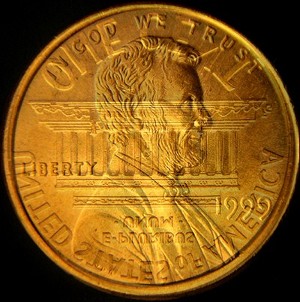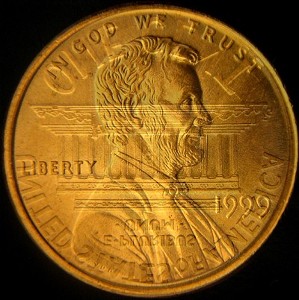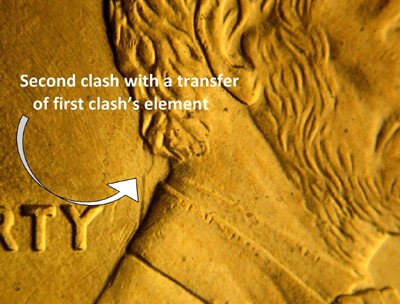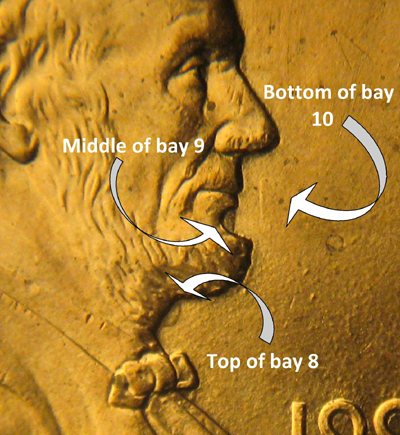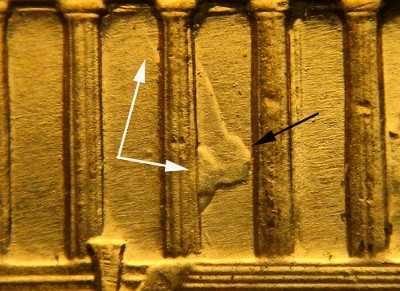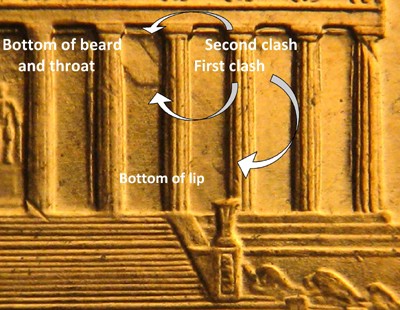CCL(TI)-1c-1999-01
This is the first of this type of counter clash (type 1) to be analyzed. The below images shows the positioning of the dies when the first clash occurred.The image to the righ is the second clash that occurred and once again shows the positioning of the dies in their relative positioning to each other when that clash occurred.
When the dies clashed for the second time, an element of the first clash was transferred to the opposing die (where that design element originated from) along with clash element created by the second clash.
The top picture shows a clash mark generated by the second clashing of the dies. The actual mark left is of the 4the bay of the memorial building. The notch seen is the back of Lincoln’s neck that was from the first clashing of dies. This transference of marks categorizes this anomaly as a type I counter clash
What makes this unique is that in a normal type I counter clash, a design element is the raised clash mark that is encountered. This occurs when the dies clash and leave a raised (incused on the coins surface) design clash mark on the opposing die face. If there is an offset in position between clash, when the second clash occurs, the raised area of the clash mark will indent the opposing dies surface (causing it to be seen as a raised area on the coin), which will be apart from the original design element that made the clash mark in the first place,
